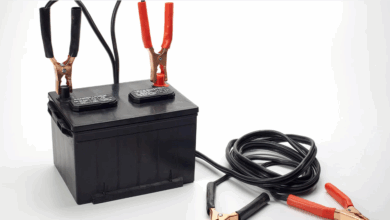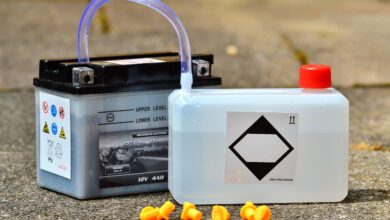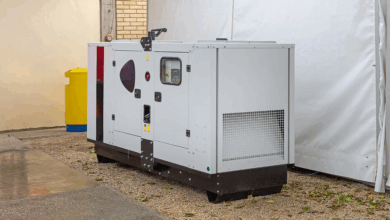Set Up Your Power Solution: A Look at 5000 Watt Generators

Set Up Your Power Solution: A Look at 5000 Watt Generators
In a world where reliable power is not always a guarantee, having a backup plan isn’t just smart – it’s essential. Whether you’re facing a grid outage, heading off-grid in an RV, running a remote job site, or simply want peace of mind during unpredictable weather, a portable generator can be your lifeline. Among the vast array of options available, the 5000-watt generator occupies a particularly popular and versatile position.
Often considered the "sweet spot" for many residential and recreational needs, a 5000-watt generator strikes a balance between sufficient power output and manageable size/cost. It’s robust enough to handle multiple essential appliances simultaneously during a power outage, yet often more portable and less expensive than larger, whole-house units. Let’s delve into what a 5000-watt generator can do, what features to look for, and how to effectively set up your power solution.
Why 5000 Watts? The Sweet Spot for Versatility
The wattage rating of a generator indicates its power output capacity. Generators have two primary wattage ratings:
- Starting Watts (Surge Watts): This is the maximum power the generator can produce for a very short period (usually milliseconds) to help start motors on appliances like refrigerators, air conditioners, or power tools, which require a significant power surge to get going.
- Running Watts (Rated Watts): This is the continuous power the generator can safely produce over time. This is the number you primarily use to calculate what appliances you can run simultaneously.
A 5000-watt generator typically offers around 5000 running watts and a higher starting wattage, often in the 5500 to 6500 watt range, sometimes even higher. This capacity is where the versatility comes in.
What Can a 5000W Generator Power?
This power level is sufficient to run multiple critical items in a home or provide ample power for many off-grid applications. During a power outage, you can realistically expect to power:
- Essential Appliances: Refrigerator or freezer (essential for food preservation), lights (multiple rooms), fans.
- Communication & Entertainment: TV, computers, phone chargers.
- Comfort: A window air conditioner unit (check its specific wattage), electric blankets, space heaters (be mindful of their high wattage draw).
- Water: Sump pump (critical for basements), well pump (check its wattage, some larger ones might be too much).
- Cooking: Microwave, coffee maker, toaster (again, check wattage and prioritize).
- Tools: Many common power tools like saws, drills, air compressors.
Important Note: While a 5000W generator can power many things, it’s unlikely it can power everything in a standard home at once. You’ll need to manage your load, turning off non-essential items to ensure you don’t overload the generator. Calculate the running watts of the items you need and make sure the total doesn’t exceed the generator’s running wattage capacity. Factor in the starting watts needed for motors.
Key Features to Look for in a 5000W Generator
Not all 5000W generators are created equal. Consider these features when choosing a model:
- Engine Quality: Look for a reliable, well-known engine brand (like Honda, Kohler, Briggs & Stratton, or reputable generator-specific engines). Engine size and quality directly impact performance, fuel efficiency, and longevity.
- Fuel Type:
- Gasoline: Most common. Widely available but has a shorter shelf life and produces emissions.
- Dual Fuel (Gasoline & Propane): Offers flexibility. Propane stores much longer than gasoline and burns cleaner, but may offer slightly lower power output and fuel efficiency than gasoline. Tanks can be heavy.
- Outlets: Ensure it has the types and number of outlets you need (standard 120V outlets, a 240V outlet for larger appliances or tools, twist-lock outlets for secure connections, maybe a 12V DC outlet or USB ports).
- Starting Method:
- Recoil Start: The classic pull-cord. Simple and reliable, but can be difficult for some users, especially in cold weather.
- Electric Start: Starts with the push of a button (requires a battery). Much easier, especially for frequent use or in challenging conditions. Some models include remote start.
- Noise Level: Generators are inherently noisy. Conventional 5000W generators typically range from 65 to 80 decibels (dB) at a 23-foot distance. Inverter generators are much quieter but 5000W inverter models are generally more expensive. Check the dB rating if noise is a major concern (and plan where to place it away from people).
- Safety Features: Essential features include low-oil shutoff (prevents engine damage), circuit breakers (protect against overloads), and covered outlets. Some modern generators also feature CO (Carbon Monoxide) shutoff technology, which is a critical safety enhancement.
- Portability: A 5000W generator is heavy (often 100-200+ lbs). Wheels and sturdy handles are crucial for moving it around.
- Runtime: How long will it run on a full tank of fuel at a typical load? This varies based on tank size and engine efficiency.
- Maintenance Requirements & Warranty: Consider ease of maintenance and the manufacturer’s warranty.
Setting Up Your Power Solution: Practical Steps
Having the generator is just one part; setting it up safely and effectively is key.
- Choose a Safe Location: This is paramount. NEVER run a generator indoors, in a garage, shed, or any enclosed or partially enclosed space. Generators produce deadly carbon monoxide (CO). The location must be outdoors, at least 15-20 feet away from windows, doors, and vents to prevent exhaust fumes from entering buildings. Ensure the ground is level and stable. Protect it from rain and snow with an open-sided canopy or generator cover (ensure airflow is not blocked).
- Fuel Up Safely: Ensure the generator is off and cool before adding fuel. Use fresh fuel. If using gasoline, consider adding fuel stabilizer if you don’t plan to use it regularly. Store fuel in approved containers away from living areas and ignition sources.
- Starting the Generator: Follow the manufacturer’s instructions precisely. Typically, this involves checking oil levels, opening the fuel valve, applying choke (if needed), and engaging the starter (pull cord or electric start button). Let the generator run for a few minutes to warm up before connecting appliances.
- Connecting Your Load:
- Direct Connection: Use heavy-duty, outdoor-rated extension cords (appropriate gauge for the distance and load) to plug appliances directly into the generator’s outlets. This is suitable for powering a few items.
- Transfer Switch: For home backup, a transfer switch is the safest and most convenient method. Installed by a qualified electrician, it creates a dedicated circuit panel powered by the generator, isolating it from the grid. This prevents backfeeding power onto utility lines (which can kill utility workers) and allows you to power hardwired appliances like furnaces or well pumps safely. Do NOT use a generator plugged into a wall outlet (backfeeding) – it is extremely dangerous and illegal.
- Load Management: Connect appliances one by one, starting with the highest wattage items (like a refrigerator). Monitor the generator’s performance and ensure you don’t exceed the running wattage.
- Monitoring and Refueling: Keep an eye on the fuel level and the generator’s performance. Turn the generator off and allow it to cool before refueling.
Beyond Backup: Other Applications
A 5000W generator isn’t just for emergencies. Its power output makes it useful for:
- RVing & Camping: Powering appliances and electronics in RVs, especially those without extensive battery/solar systems, or providing comfort at primitive campsites.
- Job Sites: Running power tools, lights, and equipment in remote locations.
- Outdoor Events: Providing power for lighting, music, and cooking at parties, tailgates, or outdoor gatherings.
Maintenance is Key
Like any engine, a generator requires regular maintenance to remain reliable. This includes:
- Checking and changing the oil according to the manual.
- Cleaning or replacing the air filter.
- Checking/replacing the spark plug.
- Running the generator periodically (e.g., every 3 months) under a load to keep components lubricated and ensure it starts when needed.
- Using fuel stabilizer when storing gasoline for extended periods.
FAQs About 5000 Watt Generators
- Q: What’s the difference between running watts and starting watts?
- A: Running watts are the continuous power output a generator can sustain. Starting watts (or surge watts) are the brief burst of extra power needed to start motor-driven appliances. You primarily size your load based on running watts, but ensure the generator’s starting watts are sufficient for the highest surge item you’ll power.
- Q: Can a 5000W generator power my entire house?
- A: Likely not everything simultaneously. A 5000W generator can power essential circuits (fridge, lights, furnace fan, sump pump) and maybe one or two high-draw appliances (like a microwave or window AC) at a time. A whole-house standby generator is typically needed for powering an entire modern home without load management.
- Q: How loud are 5000W generators?
- A: Conventional 5000W generators are typically quite loud, often in the 70-75 dB range at 23 feet. This is roughly equivalent to a vacuum cleaner or lawnmower at that distance. Inverter generators at this wattage are quieter but significantly more expensive.
- Q: How long will a 5000W generator run on a tank of fuel?
- Q: Is dual fuel worth it?
- Q: Can I run my generator in the garage with the door open?
- A: ABSOLUTELY NOT. Running a generator in any enclosed or partially enclosed space is extremely dangerous due to the risk of fatal carbon monoxide poisoning. Always run generators outdoors, far from windows, doors, and vents.
- Q: Do I need a transfer switch to use a generator for home backup?
- A: While you can power individual appliances with extension cords, a transfer switch is highly recommended for safely powering hardwired circuits in your home. It prevents dangerous backfeeding onto the grid and allows you to use your home’s wiring system for connected circuits. It requires professional installation.
Conclusion
A 5000-watt portable generator represents a powerful, versatile, and often cost-effective solution for a wide range of power needs. It offers sufficient capacity to keep critical appliances running during an outage, power essential tools on a job site, or bring comfort and convenience to your off-grid adventures.
Choosing the right model involves considering features like engine quality, fuel type, starting method, and critical safety features. More importantly, setting up and operating your generator safely – particularly regarding placement and carbon monoxide risk – is paramount.
By understanding the capabilities of a 5000W generator and following safe operating practices, you can confidently set up a robust power solution that provides peace of mind and ensures you’re never left completely in the dark. Invest wisely, set up safely, and power on through whatever comes your way.




![How to Bypass CO Sensor on Generator – [4-Step Safety Guide]](https://www.generator411.com/wp-content/uploads/2025/08/co-sensor-on-generator-390x220.png)